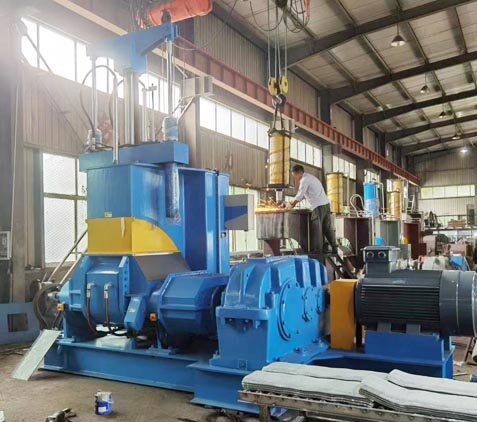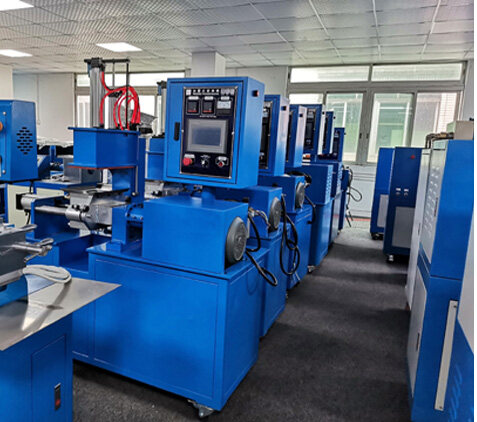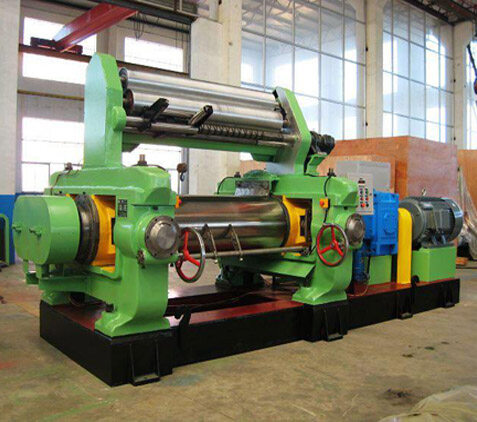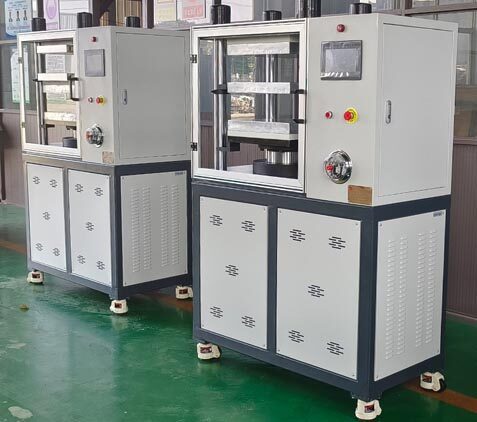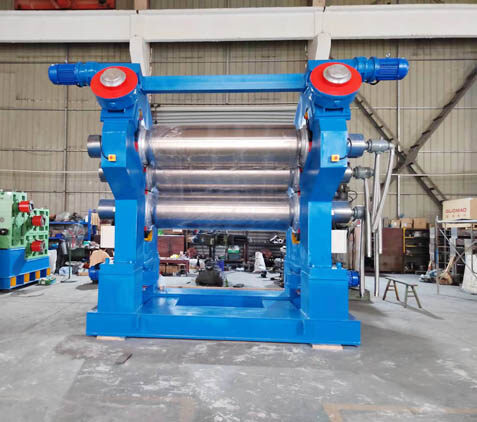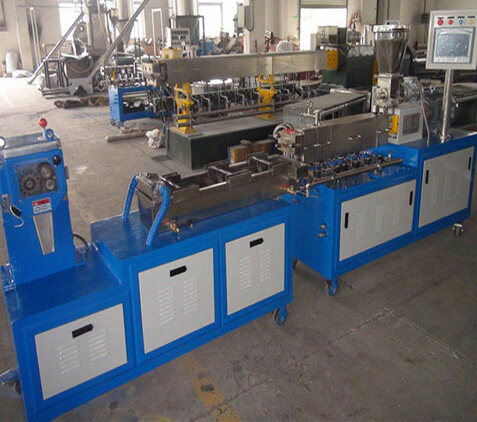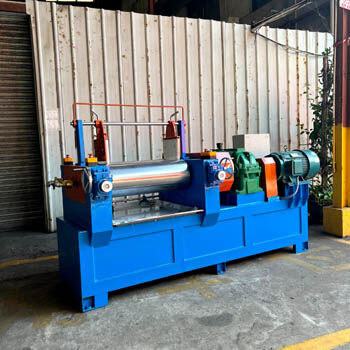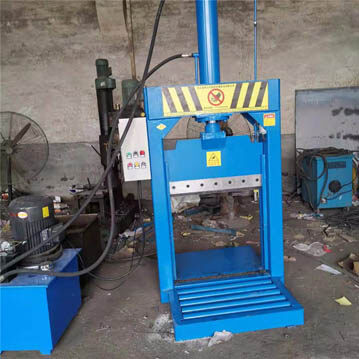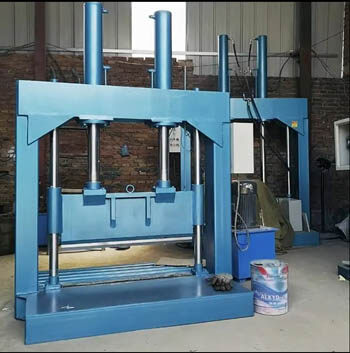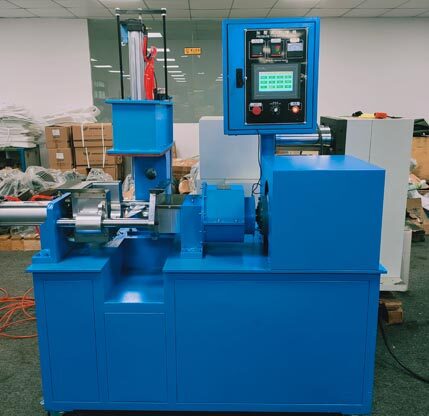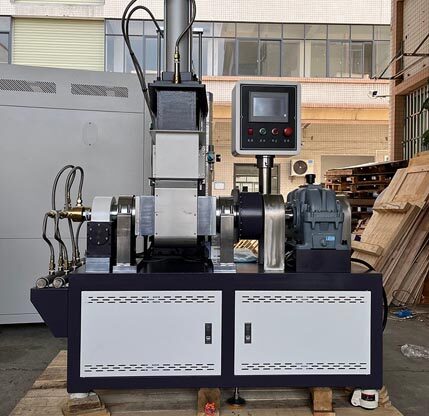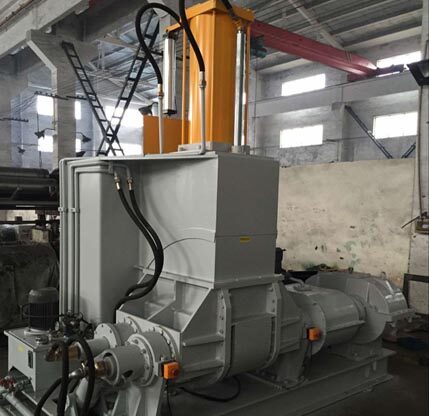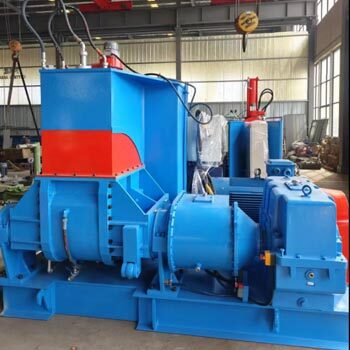In the rubber and plastic compounding industry, efficiency are the keys to consistent product quality.
The two-roll open mixing mill equipment is one of the most essential machines designed to mix raw rubber with additives , it is mainly used for blending, sheeting, and refining materials such as natural rubber, silicone, EVA, and various polymers.
Traditionally, the open mixing mill just come with single-frequency motor to drive both rolls at fixed speeds.
However, as production technology advances, the double-frequency open mixing mill has become increasingly popular due to its improved control, energy efficiency, and mixing performance.
Double-Frequency Open Mixing Mill is equipped with dual inverter motors and independent speed control, this machine is reshaping how manufacturers process rubber, silicone, and various polymer materials.
Here , in this blog , Let’s explore what a double-frequency mixing mill machine and how it works, and why it offers significant benefits over the single-frequency model.
1.What Is a Double-Frequency Open Mixing Mill Machine?
A Double-Frequency Open Mixing Mill , also named as a dual inverter or dual drive open mill, it is an advanced version of the standard two-roll mixing mill. The double frequency mixing mill is equipped with two independent variable frequency drives (VFDs) — one for each roll.
In a traditional setup, both rolls are driven by a single motor at a fixed friction ratio (for example, 1:1.25). While for the double-frequency model mixing mill , it adopt two separate frequency inverters (VFDs) — one for each roll. That is mean , each roll’s speed can be individually controlled and adjusted through the PLC or control panel, which allow the operator to control precisely the speed ratio, adjust torque , and friction ratio between the rolls freely for different materials.
To learn about Transmission and Reducer of a Two-Roll Mill
2.What Is the Difference Between Single and Double Frequency?
Single-Frequency Mixing Mill
The mill is driven just by one motor, which controll both front and rear rolls through a gearbox at fixed speed. Its friction ratio (speed difference) between the two rolls is usually usually 1:1.2.
And its speed and torque are not independently adjustable.
Double-Frequency Mixing Mill
The mill is equipped with two independent inverter (VFD) motors, one for each roll.
The speed of each roll can be adjusted separately using the PLC control panel.
Friction ratio can vary from 1:1.1 to 1:1.4, depending on the material.
In short:
👉 Single-frequency = Fixed control.
👉 Double-frequency = Flexible, precise, and intelligent control.
To learn about Two-Roll Mill Equipment with Bearing
3. How Does Double-Frequency Open Mixing Mill Machine Work?
In a single-frequency mill, both rolls are driven by a single motor through mechanical gearing. The speed ratio between the two rolls is fixed ( usually around 1:1.2 ) and cannot be adjusted easily.
While for double-frequency mixing mill, its front and rear rolls each have independent VFD motors. Therefore , the operator can set different speeds for each roll from the control panel.
4. Advantages of Double-Frequency Mixing Mill
(1) Independent Speed Control
Unlike the fixed-speed single motor type, this machine allows each roll to run at different speeds. Each roll speed can be adjusted independently. That means the operator can tailor the shear intensity to match different materials — whether for natural rubber, silicone, EVA, or thermoplastics.
This allows fine control of friction ratio — a key parameter affecting shear force and dispersion quality in rubber mixing.
Double-Frequency Open Mixing Mill allows operators to freely adjust:
* The friction ratio between the front and rear rolls
* The mixing intensity and shear rate
* The processing temperature through controlled speed difference
(2) Improved Mixing Uniformity
Independent roll speeds ensure uniform dispersion of fillers, pigments, and additives. Double-frequency control ensures better dispersion and blending of fillers, colorants, and additives.
The adjustable roll speeds allow more efficient shearing , kneading and more consistent compounds with better elasticity, color uniformity, producing smoother and more homogeneous compounds.
(3) Energy Saving (15–25%)
Each roll operates with its own frequency converter, which adjusts motor power according to load conditions.
The system automatically adjusts motor output based on the mixing load, reducing overall power consumption. This leading to 15–25% energy savings compared to single-frequency systems, which run continuously at full speed.
(4) Precise Temperature Control
Since the rolls can rotate at independent speeds, the material shear rate and frictional heat are easier to control. Overheating during mixing can degrade material quality.
With flexible speed and torque control, it helps maintain stable processing temperature and prevent material “burning” or premature curing, which is crucial for heat-sensitive materials like silicone or PVC
(5) Longer Equipment Life
Because the system automatically adjusts torque and speed, there is less mechanical stress on gears and bearings.
Double inverter drive minimizes wear on bearings, gearboxes, and rolls.
This minimizes vibration, reduces maintenance frequency, and extends overall machine service life.
5. Single-Frequency vs. Double-Frequency Open Mixing Mill
Single-Frequency vs. Double-Frequency Open Mixing Mill
Feature
Single-Frequency Mill
Double-Frequency Mill
Motor Drive
One motor for both rolls
Independent motor per roll
Speed Ratio
Fixed (e.g. 1:1.2)
Adjustable (1:1.1–1:1.4)
Mixing Quality
Standard
High uniformity and dispersion
Energy Efficiency
Moderate
15–25% power savings
Temperature Control
Limited
Flexible, better control
Maintenance
Higher wear
Reduced mechanical stress
Automation
Manual
PLC compatible
To learn about Double Frequency vs. Single Frequency Mixing Mill ?
In conclusion , the Double-Frequency Open Mixing Mill is not just an improvement — it’s a transformation in rubber and plastic compounding technology.
With dual inverter motors, intelligent speed control, and enhanced energy efficiency, it delivers superior performance compared to the traditional single-frequency mill.
Selecting a Double-Frequency Open Mixing Mill over a Single-Frequency model is an investment in precision, safety, and efficiency.
It offers:
1. Smarter control
2. Better material uniformity
3.Lower power consumption
4.Longer machine lifespan
In short — Double-Frequency Open Mixing Mill is the next generation of open mixing technology.
For manufacturers who are pursuing precision, productivity, and long-term cost savings , Double-Frequency Open Mixing Mill Machine is worhy investing.
Choosing a Double-Frequency Open Mixing Mill means choosing:
✅ Better control
✅ Higher mixing quality
✅ Energy savings
✅ Extended machine life
✅ Safer and smarter production
It is the ideal upgrade for laboratories and industrial plants aiming to achieve precision compounding and automation efficiency.
If you’re upgrading your mixing equipment or planning a new production line, a Double-Frequency Open Mixing Mill at Simptek is the smarter, long-term investment.
More about double frequency drive open mixing mill
Votre partenaire de confiance pour les outils industriels
Pourquoi nous choisir?
Avec une équipe d'ingénieurs et de travailleurs hautement spécialisés, nous assurons que les produits que nous fabriquons sont de haute qualité.
- Des cellules de fabrication optimisées et de haute qualité offrant une productivité accrue
- En plus de la qualité ultra-avancée des produits, nous offrons également le meilleur service à nos clients.
- Nous sommes équipés d'une équipe de R & D hautement professionnelle.
- Nous vous assurons une équipe d'experts. Nous suivons un processus de production allégée et, par conséquent, engageons moins de coûts d'exploitation.


